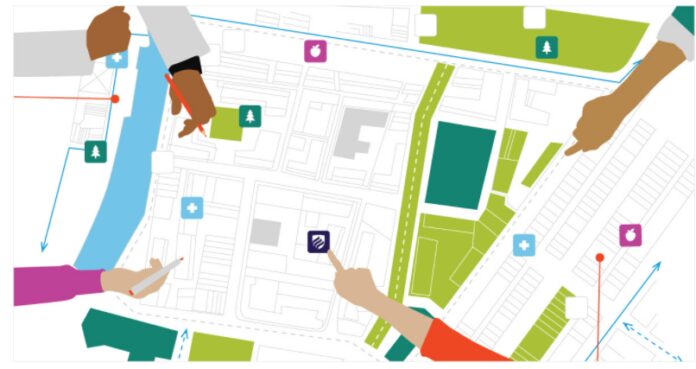
Table of Contents
Characteristics of basic open user GIS
The existing GIS software can be roughly divided into 3 classes: these are web GIS, desktop GIS and spatial databases.
While databases and web cartographic servers have occupied a fairly stable niche in production, Importance of GIS in planning is actively searching for its niche.
Desktop (user) GIS is mapping software that is installed and run on a personal computer and allows users to display, select, update and analyze data about geographic objects and associated attribute information. Let’s consider a brief description of the main open user GIS. Additional information is also provided in Table 3.
Geographic Resources Analysis Support System (GRASS)
The latest version of GRASS 6.4 is a modular system that provides access to more than 300 modules for working with 2D and 3D raster and vector data and is comparable in functionality to ESRI’s ArcGIS product at the ArcInfo level. Due to the lack of a user-friendly graphical interface, the availability of GRASS is limited and it is used mainly by research institutes and universities. Until recently, the second reason holding back the growth in the number of users was the inability to run GRASS on MS-Windows platforms without using Linux or Unix platform emulators (for example, Cygwin). However, with the release of version 6.3.0, this problem has been resolved.
Quantum GIS (QGIS).
QGIS development started in 2002 by a group of enthusiasts. The goal of the development was to create an easy-to-use and fast geographic data viewer for Linux operating systems. However, as the project grew, the idea came up to use QGIS as a simple graphical interface for GRASS, thus getting its analytical and other functions at its disposal.
To date, the QGIS development team has completed the initial tasks and is working on expanding functionality that has long gone beyond a simple viewer. Through the use of the cross-platform QT toolkit, QGIS is available for most modern platforms (Windows, Mac OS X, Linux) and combines support for vector and raster data, and is also capable of working with data, provided by various map web servers and many common spatial databases. The functionality of QGIS can be developed by creating plug-ins in C ++, or Python. QGIS has one of the most developed communities in the open GIS environment, with a growing number of developers, which is facilitated by the availability of good documentation on the development process and a user-friendly architecture.
User-friendly Desktop Internet GIS (uDig)
The main purpose of creating uDig was to develop software that allows you to view and edit data stored in the database directly or via the web. Development of uDig began between 2004 and 2005 at the initiative of the Canadian company Refractions Research Inc. uDig is written in Java (using the Eclipse platform) and initially focused on working with vector data. However, in 2007, the uDig development team joined the Jgrass development team to work on implementing raster data capabilities in uDig. Very often uDig is used as an interface to the PostGIS database. There are 2 main disadvantages associated with using Eclipse. The first is the size of the application and the second is that the GUI is very similar to the development environment for programming,
Generalitat Valenciana, Geographic Information System (gvSIG)
Probably the largest project in terms of financial investment. The goal of the development is to create a system that can replace ESRI ArcView GIS 3.x in municipal authorities. The initiator of the creation is the Ministry of Transport of Valencia (Spain), which began development in connection with the decision to transfer all regional authorities to computers running Linux.
The development of gvSIG began at the end of 2003, the main developer is IVERA SA (Spain). Several universities and other companies are also involved in the project. gvSIG supports raster and vector data, and is also capable of working with geodata stored in various databases. The functions for working with raster data are based on the algorithms of the SAGA project. The programming language is Java. The purpose of creating software with functionality, comparable to ESRI ArcView (3.X), has been fully implemented, with gvSIG outperforming ArcView in places. Note that for this GIS there is Russian-language user documentation. However, there are a number of downsides: no developer documentation and massive dependency on over 100 C ++ and Java libraries.
System for Automated Geoscientific Analyses (SAGA)
As the name suggests, this GIS has scientific roots. The first module for SAGA was developed in 2001 at the Geography Department of the University of Göttingham (Germany) and was designed to work with raster data. The main purpose of SAGA is relief analysis, soil mapping and data visualization tasks. SAGA is written in C ++ and provides a user-friendly API to third-party developers. The main developer, and a little later the project itself, recently moved to the University of Hamburg. The user documentation is very good, which contributes to the continuous growth of the international user community. Thus, the number of downloads of the user manual for the period 2005-2008 increased from 700 to 1300 per month.
Integrated Land and Water Information System (ILWIS)
The development of ILWIS began at ITC, Enschede (Holland) in the 1980s. Combines the functionality of vector and raster GIS designed to solve a wide range of tasks, from image analysis to modeling erosion processes. Version 3.0 of the product is very well documented (2001 release). However, the new version refers to the documentation for version 3.0. In 2007, the source code written in (MS Visual) C was released under the open GPL license. Currently, the main project coordinator is the German company 52 ° North GmbH and, in contrast to gvSIG, the source code repository is freely available. ILWIS works only in MS-Windows operating systems.
MapWindow GIS
This GIS was created in 1998 by members of the Water Research Laboratory at the University of Utah (USA). The main goal was to develop a “GIS core” that would provide the necessary functionality for GIS developers. Field data collection GIS ActiveX control is written in MS Visual C and implements the functions of displaying, searching and managing spatial data. Later, a graphical interface called MapWindow GIS Desktop was developed and the ability to extend the functionality by using an extension system was implemented. The project is led by a development team at the University of Idaho. Recently, development is based on Microsoft. Net Framework, and therefore MapWindow is available only for MS-Windows operating systems.
















